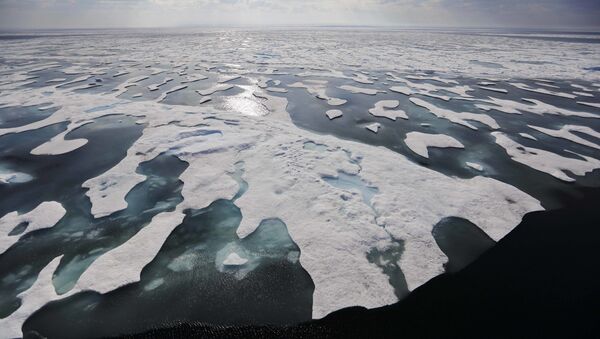The research, which was conducted by 21 institutions and used 40 climate models, found that Arctic sea ice will melt during summer months in the event of high future carbon dioxide emissions.
Even if carbon dioxide emissions are greatly reduced, the models indicated that Arctic sea ice still disappears during some summers before the mid-century mark, according to the researchers. They thus concluded that “in most simulations, the Arctic Ocean becomes practically sea-ice free in September for the first time before the year 2050.”
Currently, the North Pole is covered with ice throughout the year. While the ice cover decreases during the summer months, it builds up during the winter.
In a statement to the Independent, Dirk Notz of the University of Hamburg, who was involved in the study, said, “If we reduce global emissions rapidly and substantially, and thus keep global warming below 2 [degrees Celsius] relative to preindustrial levels, Arctic sea ice will nevertheless likely disappear occasionally in summer even before 2050. This really surprised us.”
Decreasing or non-existent sea ice cover in the Arctic could greatly affect the ecosystem of the region. A study published in November 2019 found that melting Arctic sea ice is linked to the introduction of the highly contagious phocine distemper virus (PDV) to the Northern Pacific Ocean. The disease was first detected in 1988 in northern Europe, when it caused the death of around 18,000 seals. Symptoms of the disease - which is pathogenic for animals, particularly seals and other pinnipeds - include fever, labored breathing, discharge from the nose and eyes and eventually death.
PDV is not the only illness-causing microbe that may be spreading rapidly due to climate change. Warming ocean temperatures can also lead to the proliferation of dangerous algal blooms along the US West Coast, which can be deadly to animals.
Another study, published in the journal Nature Geoscience in February, indicated that rapid thawing of Arctic permafrost could double past estimates of carbon released into the atmosphere by the thawing process, further contributing to climate change. Permafrost is defined as ground, which can include rock or soil, that remains at or below the freezing point of water (0 degrees Celsius) for two or more years. According to current estimates, permafrost contains about 1.5 trillion metric tons of carbon because it often holds “remains of life” such as dead plants, animals and microbes that contain carbon, Phys.org explains. When permafrost quickly thaws, it releases large amounts of carbon dioxide and methane, which both contribute to global warming. The study found that around 20% of the Arctic region is vulnerable to abrupt thawing of its permafrost layer.

